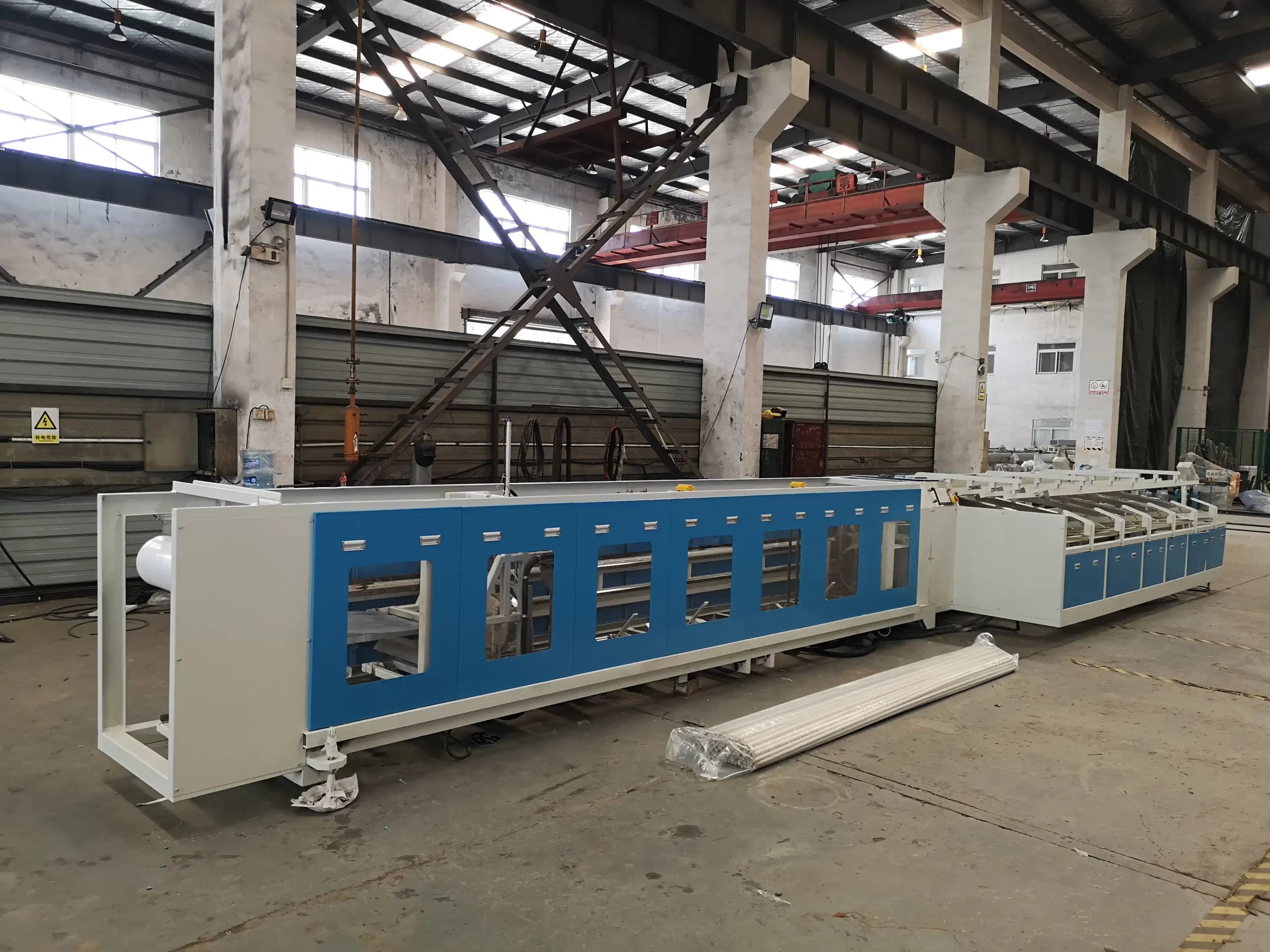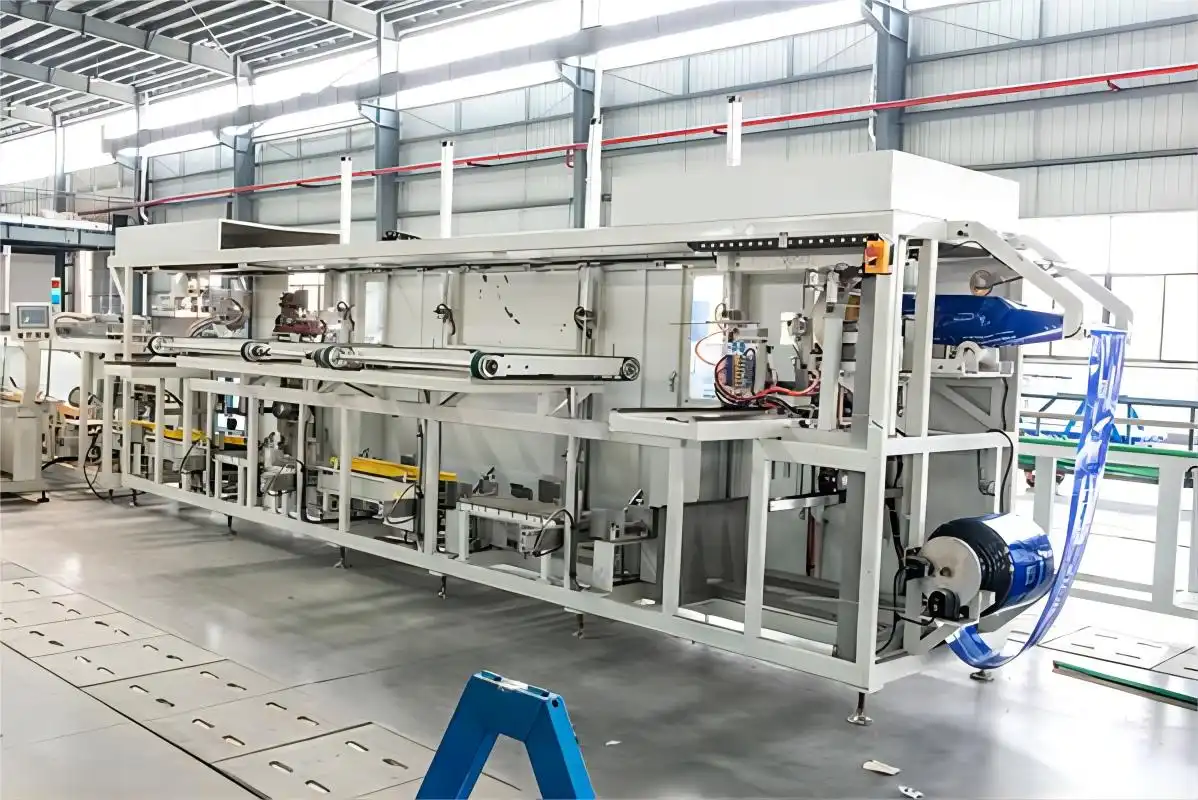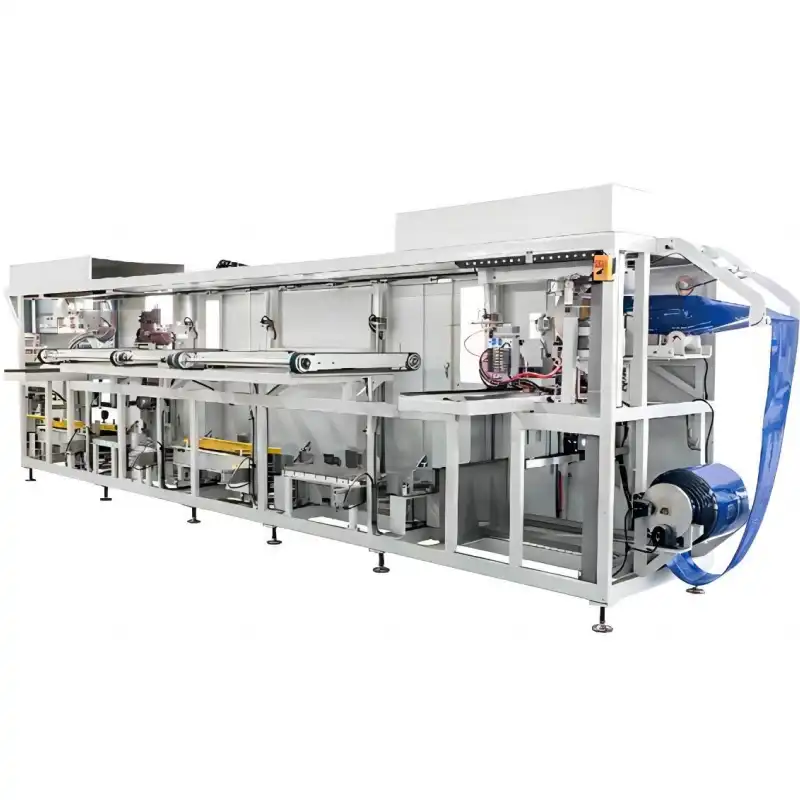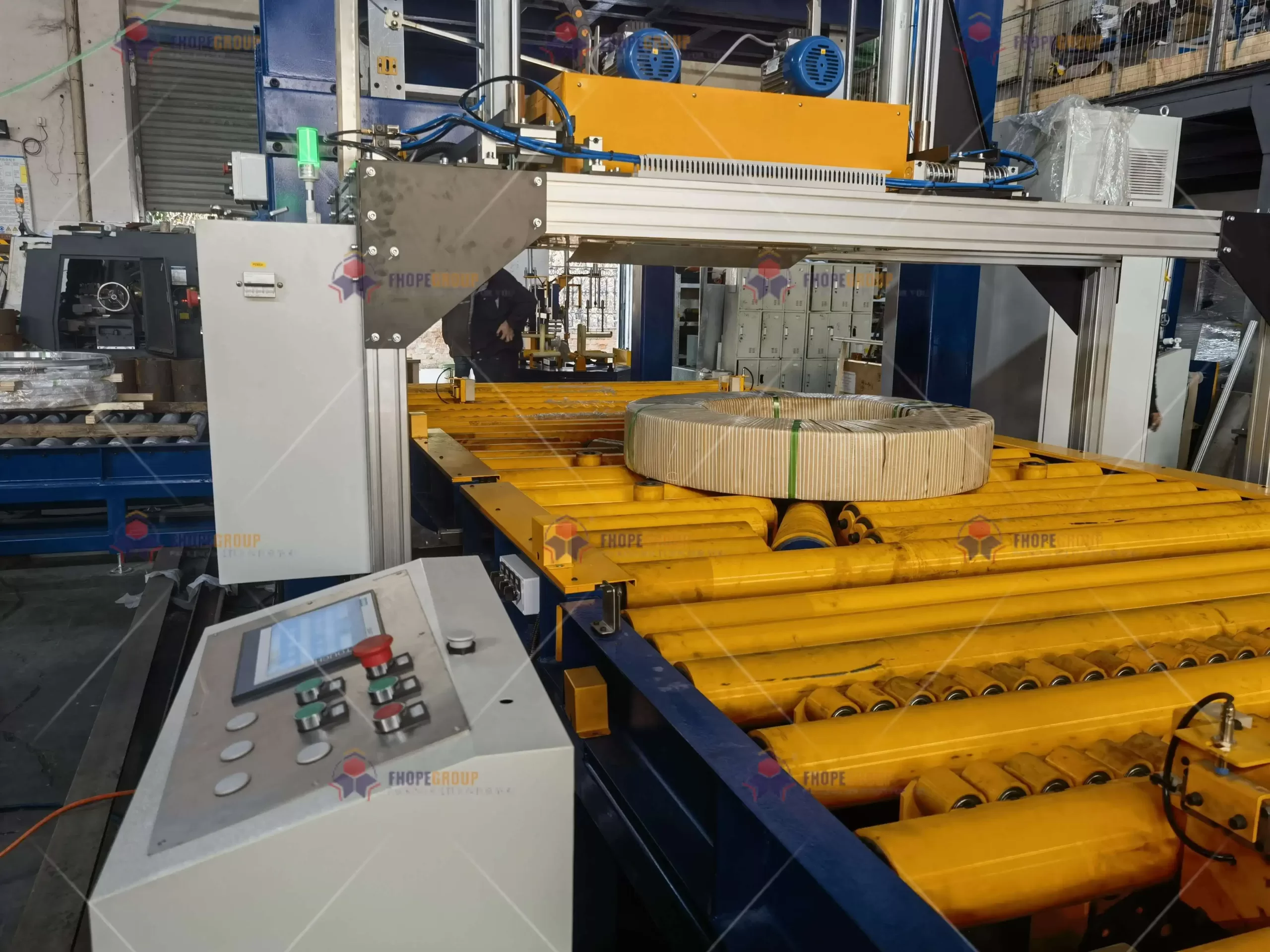How to Packing the PPR into Woven Bag for Better Protection
Packing PPR pipes into woven bags offers significant protection during storage and transport. This method safeguards against scratches, dust, and minor impacts, ensuring pipes arrive at their destination in optimal condition. It’s a cost-effective and practical solution.

Using woven bags to pack PPR pipes provides a robust barrier against environmental factors and physical damage. This method involves securely enclosing the pipes within the woven material, often polypropylene, to prevent scratches, dents, and dust accumulation during handling, storage, and transportation. The tight weave ensures that the pipes remain clean and protected until use.
Choosing the right packing method is crucial for maintaining the integrity of PPR pipes. Let’s explore the best practices for packing PPR pipes into woven bags, ensuring they are well-protected throughout their journey from the factory to the job site.
1. Selecting the Right Woven Bag
Choosing the correct woven bag is vital for optimal PPR pipe protection. Factors such as bag material, size, and strength influence the level of safeguarding during transit and storage. Proper selection minimizes the risk of damage.
The ideal woven bag for packing PPR pipes is made from high-strength polypropylene, offering superior tear resistance and durability. The bag size should adequately accommodate the length and diameter of the pipes being packed, preventing overcrowding and potential damage. A bag with a reinforced bottom and secure stitching is essential for withstanding the rigors of handling and transportation.

But how do you decide between different woven bag options? Let’s break down the key considerations.
Comparing Woven Bag Materials for PPR Pipe Protection
The material of the woven bag plays a significant role in how well it protects PPR pipes. Polypropylene is a common choice, but other options exist. Understanding their strengths and weaknesses is crucial for making an informed decision.
| Material | Strength | Tear Resistance | Water Resistance | Cost | Best Use Case |
|---|---|---|---|---|---|
| Polypropylene (PP) | High | Good | Good | Moderate | General PPR pipe packing, suitable for most conditions |
| Polyethylene (PE) | Moderate | Fair | Excellent | Low | Lighter pipes, less demanding transport conditions |
| Laminated PP | Very High | Excellent | Excellent | High | Heavy pipes, long-distance transport, harsh conditions |
- Polypropylene (PP): Offers a balanced combination of strength, tear resistance, and cost-effectiveness, making it suitable for most PPR pipe packing needs.
- Polyethylene (PE): Provides excellent water resistance at a lower cost but lacks the strength and tear resistance of PP, making it better suited for lighter pipes and less demanding transport conditions.
- Laminated PP: Combines the benefits of PP with an added layer of lamination for enhanced strength, tear resistance, and water resistance, making it ideal for heavy pipes and harsh transport conditions.
Sizing Matters: Ensuring the Right Fit for Your PPR Pipes
The size of the woven bag is another critical consideration. A bag that is too small can cause stress on the pipes, while a bag that is too large can lead to unnecessary movement and potential damage.
- Measure the Pipes: Accurately measure the length and diameter of the PPR pipes you need to pack.
- Allow Extra Space: Add a few extra inches to both measurements to allow for easy insertion and removal of the pipes.
- Consider the Quantity: Determine how many pipes will be packed in each bag and ensure the bag is large enough to accommodate them without overcrowding.
Reinforcements for Enhanced Protection
For added protection, consider woven bags with reinforced bottoms and secure stitching. These features enhance the bag’s ability to withstand the weight of the pipes and the stresses of handling.
- Reinforced Bottoms: Prevent the bag from tearing or bursting when lifted or moved.
- Secure Stitching: Ensures the seams of the bag remain intact, even under heavy loads.
2. Proper Loading Techniques
Effective loading techniques are crucial for preventing damage to PPR pipes during packaging. Avoid overcrowding and ensure even weight distribution to minimize the risk of bending or breakage. Securely close the bag to prevent pipes from shifting during transit.
The key to proper loading is to distribute the weight evenly across the woven bag. Start by placing a layer of cushioning material at the bottom, then carefully arrange the PPR pipes in a parallel manner. Avoid stacking pipes too high, and ensure there is adequate space between them to prevent rubbing and scratches. Once loaded, securely close the bag using stitching, sealing, or tying methods.

Let’s delve deeper into the best practices for loading PPR pipes into woven bags.
Layering and Weight Distribution
Layering and proper weight distribution are fundamental to preventing damage during transit. By distributing the weight evenly, you minimize the risk of pipes bending or breaking under pressure.
- Bottom Cushioning: Start with a layer of cushioning material at the bottom of the bag. This can be bubble wrap, foam, or even extra layers of woven fabric.
- Parallel Arrangement: Carefully arrange the PPR pipes in a parallel manner, ensuring they are aligned and not overlapping.
- Even Weight Distribution: Distribute the pipes evenly across the bag’s width and length to prevent any one area from bearing too much weight.
Avoiding Overcrowding
Overcrowding the bag can lead to significant damage to the PPR pipes. When pipes are packed too tightly, they can rub against each other, causing scratches and dents.
- Leave Space: Ensure there is adequate space between the pipes to prevent rubbing.
- Limit Quantity: Limit the number of pipes packed in each bag to avoid excessive weight and pressure.
Securing the Bag Closure
A secure bag closure is essential to prevent pipes from shifting during transit. The method you choose will depend on the type of woven bag and the level of security required.
- Stitching: Provides the most secure closure, especially for heavy loads. Use a heavy-duty bag sewing machine for best results.
- Sealing: Heat sealing is a quick and effective method for closing woven bags, providing a tamper-evident seal.
- Tying: Tying the bag with strong rope or twine is a simple and cost-effective method, but it may not be as secure as stitching or sealing.
3. Sealing and Stitching Techniques
Proper sealing and stitching techniques are essential for securing woven bags containing PPR pipes. Strong, durable closures prevent pipes from shifting or falling out during handling and transportation, ensuring their protection. The automatic bag cutting & stitching machinecan further automate the bag closing process
Effective sealing and stitching involve using appropriate equipment and techniques to create a robust closure. Stitching with a heavy-duty sewing machine and durable thread is ideal for heavy loads. Sealing, particularly heat sealing, provides a tamper-evident closure that protects against contamination and unauthorized access.

But how do you choose the right sealing or stitching technique for your PPR pipe packaging needs?
Stitching: The Reliable Choice for Heavy Loads
Stitching offers a secure and reliable closure, particularly for woven bags containing heavy PPR pipes. Using a heavy-duty sewing machine and durable thread ensures the bag remains closed, even under significant stress.
| Stitch Type | Thread Type | Advantages | Disadvantages | Best Use Case |
|---|---|---|---|---|
| Chain Stitch | Polyester | Strong, flexible, and easy to repair | Less secure than lock stitch if one thread breaks | General PPR pipe packing, suitable for most conditions |
| Lock Stitch | Nylon | Very secure, difficult to unravel | Less flexible than chain stitch | Heavy pipes, long-distance transport, harsh conditions |
| Overlock Stitch | Polypropylene | Prevents fraying of fabric edges, adds extra strength to the seam | Requires specialized sewing machine | Bags made from loosely woven materials, requiring extra seam reinforcement |
- Chain Stitch: A strong and flexible stitch that is easy to repair, making it a good choice for general PPR pipe packing.
- Lock Stitch: A very secure stitch that is difficult to unravel, making it ideal for heavy pipes and demanding transport conditions.
- Overlock Stitch: Prevents fraying of fabric edges and adds extra strength to the seam, suitable for bags made from loosely woven materials.
Sealing: A Quick and Tamper-Evident Solution
Sealing, especially heat sealing, provides a quick and tamper-evident closure for woven bags. This method is particularly useful when protecting against contamination or unauthorized access is a concern.
- Heat Sealing: Uses heat to melt and fuse the edges of the bag together, creating a strong and tamper-evident seal.
- Ultrasonic Sealing: Uses high-frequency vibrations to create a molecular bond between the bag’s layers, resulting in a strong and airtight seal.
Combining Stitching and Sealing
For maximum security, consider combining stitching and sealing techniques. This provides a double layer of protection, ensuring the bag remains closed and tamper-evident throughout the transport process.
4. Handling and Storage Recommendations

Proper handling and storage of PPR pipes in woven bags are crucial for maintaining their integrity. Avoid dropping or dragging bags to prevent damage. Store bags in a dry, sheltered area to protect pipes from moisture and extreme temperatures.
When handling woven bags filled with PPR pipes, always lift them carefully to avoid dropping. Store the bags in a dry and well-ventilated area, away from direct sunlight and extreme temperatures. Avoid stacking bags too high to prevent pressure damage to the pipes. These simple precautions ensure that the pipes remain in excellent condition until they are ready for use.
Conclusion
Packing PPR pipes into woven bags is a cost-effective way to protect them during storage and transport. Selecting the right bag, using proper loading techniques, and implementing secure sealing methods are crucial for preventing damage. By following these guidelines, you can ensure that your PPR pipes arrive at their destination in optimal condition, ready for installation. Proper handling and storage further contribute to the longevity and usability of the pipes, making woven bags a reliable choice for PPR pipe packaging.










